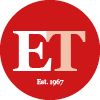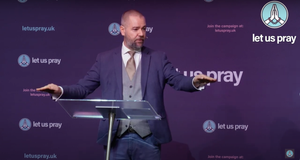The area occupied by Pakistan was once the home of the Indus Valley civilization, the earliest known culture in the Indian subcontinent. It was successively invaded by Aryans, Persians, Greeks led by Alexander the Great, Seleucids, Parthians, Arabs, Turks, Persians and Afghans. Eventually it was brought under British control as part of British north-west India.
Pakistan’s creation was the result of Indian Muslims, led by Muhammed Jinnah, agitating for their own political identity. When India achieved independence from Britain in 1947, East and West Pakistan were carved out of the whole, with Jinnah as the first governor-general of Pakistan. This partition led to serious intercommunal strife between Hindus and Muslims across the sub-continent. Up to one million people may have been killed in the upheavals that resulted.
In 1958, an army coup led by General Ayub Khan replaced civilian rule with a military dictatorship. There was, nevertheless, rapid economic growth. In 1969, following riots, Ayub Khan was replaced by General Yahya Khan.
From the start there had been tensions between East and West Pakistan. These came to a head in 1971, when elections in the East resulted in victory for the Awami League, a group which had campaigned for Eastern autonomy. When East Pakistan declared independence, civil war resulted. The West was defeated because India intervened decisively on the East’s side. East Pakistan became the independent republic of Bangladesh.
In West Pakistan power passed to a civilian, Zulfikar Bhutto, but he was later replaced in an army coup led by General Zia ul-Haq. Bhutto was executed for alleged murder in 1979. General Zia sought to Islamize Pakistan. During the 1980s calls for greater democracy came from the People’s Party, led by Zulfikar’s daughter, Benazir Bhutto. General Zia was killed in an air crash in 1988, in which sabotage was suspected. Elections followed and Benazir became prime minister. Political turmoil continued and eventually she was dismissed from power, charged with incompetence and corruption. Then, in 1993, Benazir Bhutto was returned to power with a smaller electoral majority.
Difficulties
Throughout its existence Pakistan has experienced difficulties of all kinds.
1. External threats. Hostile relations with India over Kashmir have led to several wars. 1971 saw the loss of East Pakistan. Much of the country’s income has been spent on the military and in 1994 Pakistan admitted to possessing a nuclear bomb.
2. Internal tensions. There is a large, well-armed Afghan mujahedeen (guerrilla fighters), resulting from the 1979 Soviet invasion of Afghanistan and the long civil war that followed. Millions of Afghan refugees have flooded into Pakistan. The Sindhis, Baluchis and Pathans dislike the dominant Punjabis and there are strong separatist nationalist movements.
3. Political problems. Power has oscillated between feuding political parties and autocratic military dictatorships, and this against the background of widespread corruption in society.
4. Cultural pressures. Caste mentality, which affects Muslims as well as Hindus, and the gradual Islamization of Pakistan have heightened prejudice against minority groups. Islamic fundamentalists are bitterly opposed to any secularization. In such a society women are especially oppressed and exploited.
Church history
Nestorian Christians were probably present from an early date but there is little evidence of organized Christian churches existing before the sixteenth century. Armenian Christians and Jesuits were present for part of the seventeenth and eighteenth centuries.
Protestant missionary work began in earnest after the British conquest of the Sikh kingdom of Punjab in 1849. The Church Missionary Society began work in the cities in 1850, teaching the Bible to high-caste young Hindus and distributing Scripture portions. It established many schools and hospitals. By 1885 the Anglican church had grown to 196 communicant members. Similar results attended the early efforts of American and Scottish Presbyterians.
The mid-1870s in the Punjab saw large-scale movements of thousands of low-caste Hindus into the churches. Some of these converts experienced saving faith but many converted for social advantage. In north-west British India conversion to Christianity was a way of elevating social status, escaping low-caste and, at the same time, avoiding the strongly anti-Hindu sentiment of the Muslim community. However, some Sikhs and Muslims were also converted. During the early 1900s, many nominal Christians were brought to true faith in Christ through the ministry of missionaries such as John ‘Praying’ Hyde, particularly at large gatherings such as the Sialkot Convention. In 1900 the Presbyterian church, for example, numbered 7,000 members but by 1930 had 45,000 members.
In the wake of this growth the denominations purchased land and established villages for ‘Christians’. Such were centred on church-building, school and drinking-well, and surrounded by farm land. Hospitals and colleges were also multiplied. However, without minimizing any good these achieved, these developments fostered institutionalism and missionary paternalism rather than the creation of indigenous churches established in the grace of the gospel. Concepts of mission, here as elsewhere, had become expanded from the straight preaching of the gospel to cover any benevolent work done in the name of the church. Humanitarian or educational work is indeed legitimate for Christians, but it is not, strictly speaking, missionary work.
From 1947 many interdenominational missionary societies and interchurch agencies worked in Pakistan. At the same time many Christian agencies handed over their leadership to nationals. This indigenization revealed that few Pakistanis were suitably trained and ready for spiritual leadership. This crisis was partly allayed by the development of theological training-by-extension and residential Bible-teaching courses.
Most of the denominations were increasingly influenced by the ecumenical movement. In 1970 the Anglicans, Methodists, Lutherans and some Presbyterians united to form the Church of Pakistan, which is now the largest denomination in Pakistan. The Brethren, who were influenced by the ministry of Bakht Singh in the early part of this century, were among those who stood apart from ecumenism. They have seen growth in Punjab and amongst the Baltis in the north.
Current situation in the churches
It is estimated that over 95% of the present Protestant community of 1.3 million are the physical descendants of those who joined the churches in the late nineteenth century. Most of these are illiterate, poor and, in spite of their professed Christian adherence, bound by the traditions of their Hindu ancestors. Such include dependence upon ‘holy men’ and the use of charms and amulets to ward off evil.
In the Protestant community there are an estimated 110,000 evangelicals and 36,000 Pentecostals or charismatics. It is reported that within major historic Protestant churches there is little solid Bible teaching and much formalism. Of the evangelical scene, one correspondent to Evangelical Times says, ‘As regards the doctrines of grace the picture is very bleak. I know of no church where the pastor, church leaders and congregation would consciously hold to the doctrines of grace … The number of missionaries known to me who themselves hold to a Reformed doctrinal position are very few, less than ten. A number of good missionaries and some church pastors, while not conversant with biblical Calvinism, would nevertheless … have positive teaching ministries.’ Another correspondent amplifies the latter point by saying, ‘Scattered throughout the country are a core of faithful, hard-working godly leaders.’
Many church members and pastors are said to be unregenerate. Most pastors have only limited Bible knowledge and little understanding of the doctrines of grace. One correspondent writes, ‘Few … study seriously to feed the flock of God committed to them … Often pastors only seem to visit their people just to receive offerings for their own support.’ Another writes, ‘Serious systematic Bible teaching and preaching is rare in seminaries, Bible colleges and consequently in local churches.’ One of the main Bible seminaries has been wracked for a long time by power struggles amongst the staff.
Encouragements
There are talented and spiritual Christian men scattered through Pakistan who represent a potential for growth, yet few have been exposed to clear teaching in the Reformed faith. Recently such teaching has been given annually at a pastors’ conference, attended by an average of twenty-five men.
A few Reformed books, such as Berkhof’s Systematic Theology, the 1689 Baptist Confession of Faith, a simplified version of A. W. Pink’s Sovereignty of God and J. C. Ryle’s commentary on Matthew’s Gospel have been translated into Urdu; otherwise, in the words of one observer, such books ‘are almost unknown’.
There are encouraging reports of sustained interest in the gospel since the 1960s in tribal groups of the Sindh and lower Punjab, including the Marwari Bhils and Kolis.
Persecution
Jinnah, the founding father of Pakistan, had envisaged a country with peace and security for Muslims and toleration for adherents of other religions, but it was not long before professing Christians in Pakistan were being treated as second-class citizens. They were discriminated against in relation to ownership of property, access to higher education and government jobs and permission to erect buildings for Christian worship. This prejudice was fuelled by the fact that many Christian converts were drawn from low-caste Hindus.
There has also been a gradual phasing in of shari’ah (Islamic) law. Although the present government professes to be committed to upholding the rights of all its citizens, Christian converts from Islam can come under intense pressure from those around them. One convert, who would not renounce his faith in Christ, was martyred by his own family in July 1979. The same incensed family have sworn to kill his pastor.
The blasphemy law forbids, under penalty of death, ‘derogatory statements’ against Muhammad. Many professing Christians have been imprisoned or martyred on this pretext. Worldwide publicity was generated when waiting Muslims killed a young Christian man as he left a courthouse, the magistrate having just dismissed blasphemy charges against him. Paradoxically the struggle against this law has encouraged the rapprochement of Roman Catholics and Protestants. Joint pastoral letters from the Catholic and Anglican churches regularly circulate among the churches and joint fasts and prayer vigils are organized. A recent mass-demonstration against the blasphemy laws featured Protestant pastors marching alongside Catholic priests.
A clear distinction should be made between persecution for Christ’s sake and opposition arising out of carnal behaviour (1 Peter 4:14-15). For example, it is said that voting for new Pakistani bishops regularly involves bribery within the church. While persecution undoubtedly takes place, some reports reaching the West have been exaggerated or distorted. One correspondent writes that ‘contrary to expectation, much liberty exists in Pakistan for careful missionary work’. There is often freedom to speak person-to-person of Christ, theological issues can be discussed and those with genuine understanding in religious things are respected.
Challenges and opportunities
1. The professing church in Pakistan is surrounded by an ‘ocean of Islam’. Many Pakistani Christians, however, are said to be insecure, introverted and dogged by factionalism, although it is possible to witness to Muslims by various means. The nominal Christian community also waits to be re-evangelized.
2. Unreached areas of Pakistan include most of Sindh, the large, sparsely populated province of Baluchistan and the North West Frontier Province. The northern mountain valleys of Kashmir, with their twenty-seven Muslim-oriented tribes and one animistic tribe (dating back to Alexander the Great’s time), and the huge cities of Karachi and Lahore are also largely unreached.
3. Pakistanis have emigrated to the Middle East, North America, Britain (450,000) and Australia. These constitute a mission-field in their own right.
Conclusion
Let us pray for the church in Pakistan, which is under intense spiritual attack! The nation’s identification with Islam, the weak indigenous church and diversity of unevangelized communities present a serious missionary challenge. Preachers, in this third largest Muslim community in the world, need to be established in the true gospel, so that they in turn can train others (2 Timothy 2:2). The need for Reformed Christian literature remains paramount.






















